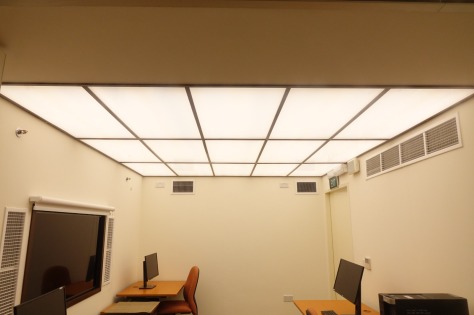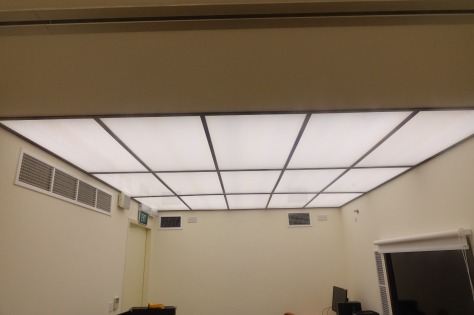Kim Loong, Lim (Environmental Decisions)
I am a final year PhD candidate in the Future Resilient Systems (SEC-NTU) research program and I am interested in human decision-making. My research projects revolves around energy and resource sustainability topics and I focus mainly on applying neurophysiological approaches to behavioural interventions, primarily pertaining to cognitive processing and visual information perception and behaviour, as well as in multimodal sensory applications of coloured illumination on indoor human thermal comfort. Before joining DEON lab, I completed a BSc in Psychology from the University of Queensland (UQ), as well as a Masters in Neuroscience in the Queensland Brain Institute, also located in UQ. I’m also an avid gamer and enjoy examining how game design employs various decision-making and habit formation mechanisms.
Research projects
Global climate change represents one of the biggest issues threatening all aspects of normal societal functioning today and the reduction of greenhouse-gases (GHG) emissions from human activities remains a primary focus for many researchers and policy makers globally. Strategies to curb emissions have recently seen an increasing focus on sociopsychological and behavioural paradigms, due to the large impact of human behaviour and decision-making – potentially negating or even reversing any gains stemming from engineering and technological efficiency improvements (Abrahamse, Steg, Vlek, & Rothengatter, 2005; D’Oca, Hong, & Langevin, 2018; Ho, 2015; Shen, Sun, & Lu, 2017; Sovacool, 2014).
Individuals and domestic energy consumption accounts for a significant (15-20%) proportion of total energy demand in OECD countries, and up to 40% of GHG emissions (Abrahamse et al., 2005; Hertwich & Peters, 2009; Steg, 2008), making them a prime target for energy intervention strategies. Information intervention strategies – where the provision of key information is used to effect behavioural change – is one of the most widely researched and employed behavioural strategies.
To improve the effectiveness informational intervention strategies, it is critical to examine the validity and characteristics of human information cognitive perception. In my research projects, I employed neuroscience approaches such as eye-tracking to help us understand how different parameters, such as informational forms (e.g. graphical/text) and types (e.g. cost/physical units/social norms), and/or even low level visual factors such as visuospatial position or size impact an individual’s attention and cognitive processes. In conjunction with behavioural tasks, we are also able to investigate the effects of different informational items on judgement and decision making to draw conclusions.
I also investigate sustainability interventions strategies that utilize multimodal perception, i.e. that sensory input from one modality is processed by the human brain in relation to another sensory modality (Spence & Driver, 2004; Warren, Welch, & McCarthy, 1981; Welch & Warren, 1986); employing the psychological association between colour and thermic concepts (e.g. warm/cold) as a means to ultimately reduce energy consumption in indoor thermal conditioning/HVAC systems – one of the biggest contributors of total energy usage (Al-Obaidi, Ismail, & Abdul Rahman, 2014; Balaras, Droutsa, Dascalaki, & Kontoyiannidis, 2005; Costa, Keane, Torrens, & Corry, 2013; Fiaschi, Bandinelli, & Conti, 2012; Pérez-Lombard, Ortiz, & Pout, 2008). By modulating indoor illumination hues to influence thermal comfort across different phases of the human circadian rhythm, my experiments involve the combination of behavioural and physiological measures via personal wearable technologies.


References
Abrahamse, W., Steg, L., Vlek, C., & Rothengatter, T. (2005). A review of intervention studies aimed at household energy conservation. Journal of Environmental Psychology, 25(3), 273–291. https://doi.org/10.1016/j.jenvp.2005.08.002
Al-Obaidi, K. M., Ismail, M., & Abdul Rahman, A. M. (2014). Passive cooling techniques through reflective and radiative roofs in tropical houses in Southeast Asia: A literature review. Frontiers of Architectural Research, 3(3), 283–297. https://doi.org/10.1016/j.foar.2014.06.002
Balaras, C. A., Droutsa, K., Dascalaki, E., & Kontoyiannidis, S. (2005). Heating energy consumption and resulting environmental impact of European apartment buildings. Energy and Buildings, 37(5), 429–442. https://doi.org/10.1016/j.enbuild.2004.08.003
Costa, A., Keane, M. M., Torrens, J. I., & Corry, E. (2013). Building operation and energy performance: Monitoring, analysis and optimisation toolkit. Applied Energy, 101, 310–316. https://doi.org/10.1016/j.apenergy.2011.10.037
D’Oca, S., Hong, T., & Langevin, J. (2018). The human dimensions of energy use in buildings: A review. Renewable and Sustainable Energy Reviews, 81, 731–742. https://doi.org/10.1016/j.rser.2017.08.019
Fiaschi, D., Bandinelli, R., & Conti, S. (2012). A case study for energy issues of public buildings and utilities in a small municipality: Investigation of possible improvements and integration with renewables. Applied Energy, 97, 101–114. https://doi.org/10.1016/j.apenergy.2012.03.008
Hertwich, E. G., & Peters, G. P. (2009). Carbon Footprint of Nations: A Global, Trade-Linked Analysis. Environmental Science & Technology, 43(16), 6414–6420. https://doi.org/10.1021/es803496a
Ho, E. (2015). Bound by ethical complexities and socio-material histories: an exploration of household energy consumption in Singapore. Energy Research & Social Science, 10, 150–164. https://doi.org/10.1016/j.erss.2015.07.016
Pérez-Lombard, L., Ortiz, J., & Pout, C. (2008). A review on buildings energy consumption information. Energy and Buildings, 40(3), 394–398. https://doi.org/10.1016/j.enbuild.2007.03.007
Shen, M., Sun, H., & Lu, Y. (2017). Household Electricity Consumption Prediction Under Multiple Behavioural Intervention Strategies Using Support Vector Regression. Energy Procedia, 142, 2734–2739. https://doi.org/10.1016/j.egypro.2017.12.218
Sovacool, B. K. (2014). What are we doing here? Analyzing fifteen years of energy scholarship and proposing a social science research agenda. Energy Research & Social Science, 1, 1–29. https://doi.org/10.1016/j.erss.2014.02.003
Spence, C., & Driver, J. (2004). Crossmodal Space and Crossmodal Attention. https://doi.org/10.1093/acprof:oso/9780198524861.001.0001
Steg, L. (2008). Promoting household energy conservation. Energy Policy, 36(12), 4449–4453. https://doi.org/10.1016/j.enpol.2008.09.027
Warren, D. H., Welch, R. B., & McCarthy, T. J. (1981). The role of visual-auditory “compellingness” in the ventriloquism effect: Implications for transitivity among the spatial senses. Perception & Psychophysics, 30(6), 557–564. https://doi.org/10.3758/BF03202010
Welch, R. B., & Warren, D. H. (1986). Handbook of Perception and Human Performance. Sensory Processes and Perception.

